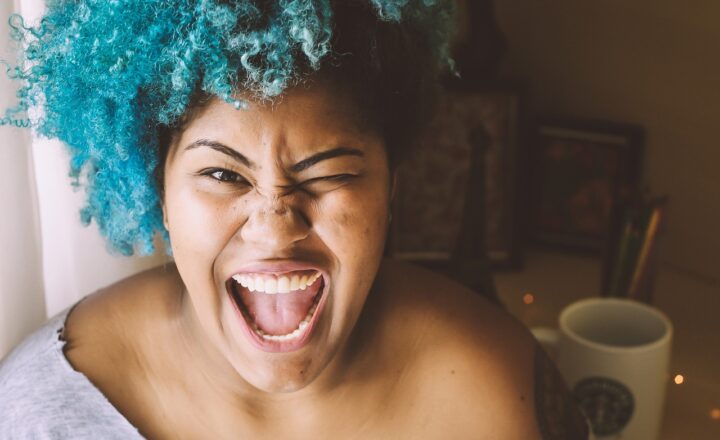
In our fast-paced, demanding world, stress can often feel like an inescapable shadow, weighing down our mental health and overall well-being. However, a growing body of research suggests that art therapy can serve as a key to unlocking better mental health, offering a therapeutic outlet that promotes healing through creativity. Art therapy blends psychological principles with creative expression, allowing individuals to communicate and manage their feelings through artistic processes. This article delves deeply into how art therapy can be an effective tool for stress relief and a powerful medium for self-expression.
1. Understanding Art Therapy
Art therapy is a form of psychotherapy that uses creative expression as a means of communication and personal development. A trained art therapist facilitates sessions that encourage clients to make art and explore their feelings through the process. This practice can be especially beneficial for those who struggle to express themselves verbally. Here are some fundamental aspects of art therapy:
- Creative Process: Engaging in artistic activities—whether drawing, painting, sculpting, or collaborating on visual projects—enables individuals to express emotions and experiences that are often difficult to articulate through words.
- Therapeutic Support: Licensed art therapists guide the process, providing support, feedback, and insight to help clients delve into the underlying issues that emerge during the creative process.
- Patient-Centric Approach: Art therapy is adaptable and can be tailored to meet the specific needs and preferences of individuals, making it suitable for clients of all ages and backgrounds.
Overall, art therapy combines artistic expression with therapeutic practices, allowing individuals to not only explore personal issues but also enhance their overall quality of life.
2. Stress Relief through Art Therapy
One of the primary benefits of art therapy is its ability to relieve stress. Engaging in artistic activities can create a state of ‘flow,’ where a person becomes absorbed in the process of creation and temporarily forgets their worries. Here’s how art therapy promotes stress relief:
- Mindfulness Practice: Creating art encourages mindfulness, a mental state characterized by present-moment awareness. As clients focus on their creative expression, they often experience a decrease in stress-related thoughts and anxiety.
- Physical Outlet: Art-making often involves physical activity, whether it’s the movement of brushstrokes or the tactile engagement with materials. This physical engagement can release tension and lead to a more relaxed state of mind.
- Emotional Release: Art therapy allows individuals to channel their emotions onto a canvas instead of bottling them up inside. It offers a non-verbal means to articulate distressing thoughts, leading to a sense of release and relief.
Many participants report feeling lighter and more relaxed after an art therapy session, as the act of creation provides a healthy way to release stress and anxiety.
3. Enhancing Self-Expression
Self-expression is crucial for emotional health, but it can often be stifled by societal expectations or difficulties in articulating feelings. Art therapy acts as a valuable tool for enhancing self-expression through the following mechanisms:
- Visual Representation of Feelings: Clients can translate their emotions into visual forms, creating art that reflects their mental state or an experience they’ve lived through. This visual output can reveal insights that may be challenging to express verbally.
- Identity Exploration: Through art, individuals can explore and affirm their identities, embracing aspects of themselves that may have been neglected or suppressed over time. Art provides a mirror to reflect their true selves without judgment.
- Facilitating Dialogue: In therapy sessions, created art serves as a focal point for discussion. Clients can describe their artwork, which often opens up conversations about feelings, experiences, and perspectives that might otherwise remain unspoken.
The creative process in art therapy lays a foundation for clients to express thoughts and emotions freely, allowing for deeper self-understanding and acceptance.
4. Who Can Benefit from Art Therapy?
Art therapy is versatile and can assist a diverse range of populations, including:
- Children: Children often respond positively to art as it allows them to communicate what they cannot yet express in words. Art therapy can help them process events such as trauma, loss, or family changes.
- Adolescents: Teenagers navigating identity formation and emotional changes can use art therapy to explore their feelings and societal pressures, providing an outlet in a challenging phase of life.
- Adults with Mental Health Issues: Adults experiencing anxiety, depression, trauma, or chronic stress can use art therapy as a coping mechanism and for insight into their mental health struggles.
- Elderly Individuals: Older adults can benefit from art therapy to facilitate reminiscence, cognitive health, and emotional well-being as they reflect on their life experiences.
The inclusive nature of art therapy makes it an essential resource for anyone seeking to improve their mental health through creative expression.
5. How to Get Started with Art Therapy
If you’re interested in exploring art therapy for stress relief and self-expression, here are some key steps to get started:
- Research Art Therapists: Look for licensed professionals who specialize in art therapy. You can find resources through therapy directories or local mental health organizations.
- Self-Directed Art Activities: If professional therapy isn’t accessible, you can still benefit from creating art on your own. Set aside time for drawing, painting, or crafting to explore your feelings and unwind.
- Join Workshops or Group Sessions: Community art therapy workshops offer a mingled environment for creative expression. Group sessions provide a sense of connection with others facing similar challenges.
- Be Open to the Process: Approach art therapy with an open mind. Understand that the process is not about creating perfect art but about expressing yourself authentically and exploring your thoughts and emotions.
Art therapy invites individuals to unleash their creativity while finding new ways to express themselves, fostering a healthier relationship with their emotions.
Conclusion
Art therapy offers a compelling solution for those struggling with stress and seeking an avenue for self-expression. By engaging with art in a therapeutic context, individuals can uncover hidden emotions, reduce stress, and reclaim their voices. Whether through guided therapy or personal artistic practice, the transformative power of creativity can illuminate paths towards healing and self-acceptance. Embrace the power of art in your journey of self-discovery, and allow it to support and enhance your mental well-being.







